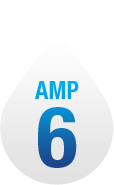- SOUTH JEDDAH - AL KHUMRA SCREEN CHAMBER AND PUMPING STATION
- BRA 3494 – Sabesp Sao Lourenco, High Pressure Pumping Station
- FRANKLEY DE-ALK TRANSFER PUMPING STATION
- Deephams FTFT Pumping Station and Inlet Culvert
- Riverside Sewage Treatment Works - Regional Sump 1
- La Villette Pumping Station
- Bewsey Bridge Pumping Station
- Suez Thermal Power Station - Intake Pumping Station
- Norway Road Pumping Station
- Grimonpont RAS Pumping Station
- Nab's Head Storm Inlet Channel and Storm Pumping Station
Pumping Stations
Deephams FTFT Pumping Station and Inlet Culvert
Client: AMK AECOM, MURPHY, KIER (JV)Scale: 1/8th & 1/12th
As part of a major upgrade to the existing Deephams WwTW the existing primary, secondary and tertiary treatment will be upgraded. In order to demonstrate hydraulic performance and compliance with the specification, physical modelling is required on key elements of the works.
After existing preliminary screening and grit removal, crude sewage gravitates to primary treatment via the existing twin culvert to streams A and B with existing stream C supplied separately. Three existing streams are supplied by gravity and the nominal flow split between the existing streams A, B and C is 35%, 35% and 30% respectively. Streams A and B are to be upgraded and C abandoned.
The existing twin culvert will be cross connected between the existing streams A and B and a new length of single culvert constructed to the new FTFT pumping station located between the new streams. The crude sewage will pass into a new self-cleansing trench type wet well with six conventional vertical line shaft pump, (four operating as duty with one standby and one maintenance standby) each VSD pump with a nominal capacity of 1500 l/s at 7.5m discharge head.
The purpose of the FTFT pumping station model test was to establish the operating characteristics of the system and to develop the design, where considered necessary, to achieve a satisfactory hydraulic environment over the full range of inflows, pump combinations and water levels. The station must operate in an environment where:-
Flow presentation to the pump intakes is acceptable.
No entrained air is drawn into the pump intakes.
Free surface and submerged vorticity are absent.
Pre-swirl rotation is within acceptable limits.
To verify that the pumping station can be self-cleansing through the implementation of the cleaning cycle
To verify that the cleaning cycle can remove debris that may have settled in the supply culvert from the secondary screens
To optimise the operation of the cleaning cycle to maximise the removal of debris.
The purpose of the FTFT inlet culvert model test was to establish the operating characteristics of the system and ensure full clearance of solids is achieved throughout the operating range towards the FTFT pumping station whilst defining water levels.
Testing compared conditions throughout a typical inflow range with and without the inclusion of a suspended baffle opposing the inlet culvert. Testing determined that the suspended baffle created unnecessary turbulence and unsteady intake of flow local to pump units P1 and P2. Without the baffle, the pump units were able to operate throughout the stipulated inflow and level range without significant turbulence or cross flow local to the individual suctions. In addition, it was considered that the vertical baffle behind pump P6 was not required with the pump spacing adequate.
A satisfactory pumping environment was observed without the inclusion of the suspended baffle throughout the stipulated level range. The pump suctions operated in an environment free from excessive cross flow, submerged and free surface vorticity with pre-swirl rotation maintained well within acceptable limits. In addition, at no stage was air entrained to the pump suctions on the proviso that the operating levels defined by the Client and Hydrotec are adhered to.
It was considered that no further improvement could be gained within the station by the inclusion of any remedial modifications, the pump units operated in an acceptable environment free from air ingress, vorticity, excessive pre-swirl rotation with an observed even velocity profile at the pump impeller.











